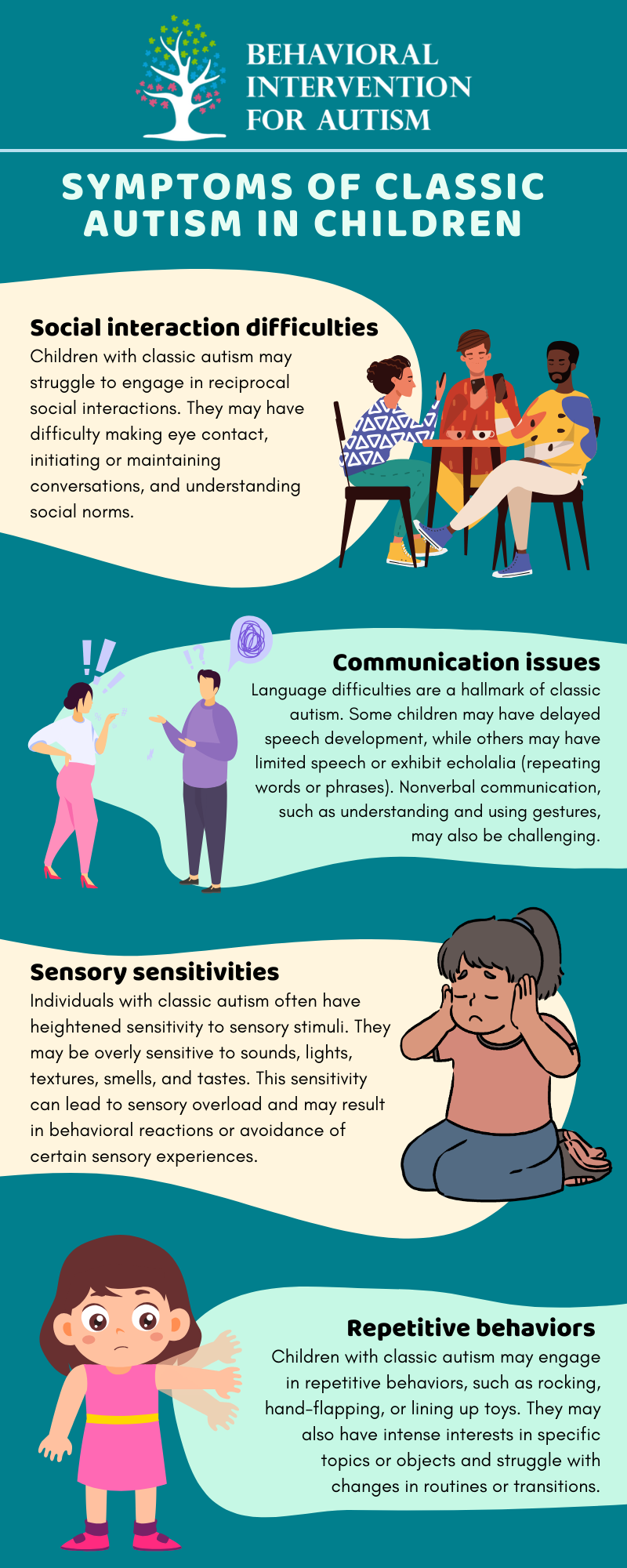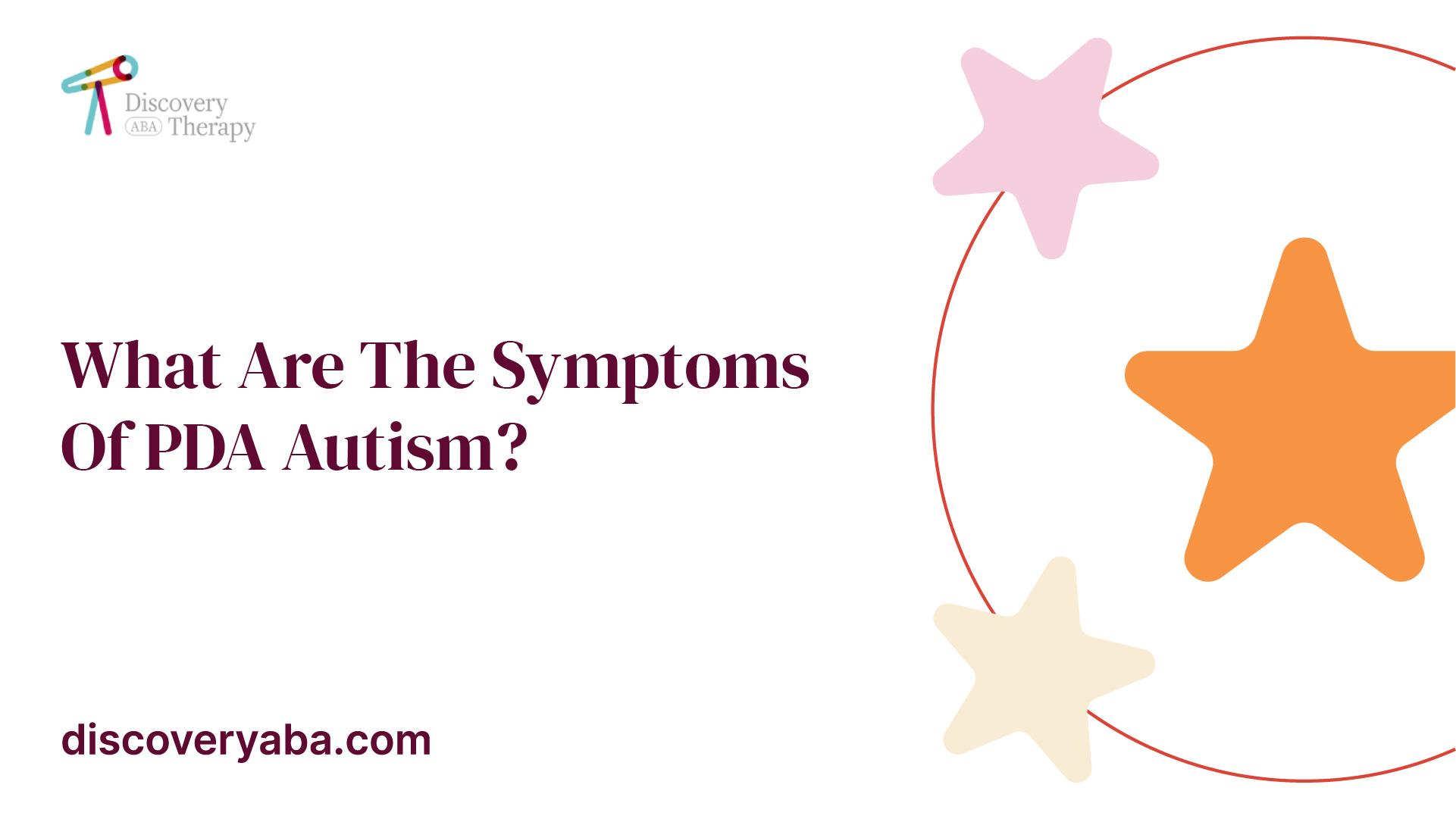Understanding the Influence of Behavioral Autism on Daily Life and Social Interactions
You may not recognize just how deeply behavior autism impacts daily life and social communications. People on the range commonly navigate a world loaded with interaction obstacles and sensory overload. These obstacles can bring about stress and seclusion, influencing their partnerships and overall well-being. Understanding these subtleties is essential for cultivating encouraging environments. What approaches can we apply to develop more significant connections and comprehensive areas? The answers may surprise you.
Defining Behavioral Autism and Its Characteristics
Behavior autism, typically referred to as autism spectrum problem (ASD), includes an array of problems characterized by difficulties in social communication, interaction, and repeated actions. You might see that individuals with ASD frequently have a hard time to interpret social signs, which can lead to misunderstandings in discussions. They may locate it hard to establish eye get in touch with or participate in small talk, making social circumstances really feel overwhelming.
Interaction problems can materialize in different methods, from postponed speech advancement to a preference for utilizing fewer words. By acknowledging these qualities, you can promote a setting that advertises approval and motivates reliable interaction, aiding individuals with autism thrive in their day-to-day communications.
The Range of Autism: Comprehending Irregularity in Actions
Autism range disorder (ASD) isn't a one-size-fits-all medical diagnosis; it varies extensively among people. You might come across individuals that are extremely spoken and involve conveniently in conversations, while others could favor singular activities or communicate non-verbally.
Furthermore, the means people with ASD react to sensory input can vary considerably; some could be overwhelmed by loud noises or bright lights, whereas others flourish in boosting atmospheres. The range likewise includes distinctions in social communications; some individuals might have a hard time to analyze social signs, while others browse social settings with loved one simplicity. Understanding this irregularity is vital, as it helps you appreciate each individual's special experience and dressmaker support to their specific needs, fostering a much more inclusive setting for every person.
Communication Challenges Dealt With by Individuals With Autism
When you engage with individuals on the autism range, you may notice their special interaction obstacles. They commonly encounter problems with both verbal and nonverbal hints, which can impact their social communications. Comprehending these obstacles is essential for cultivating far better links and support.

Verbal Communication Problems
Lots of individuals on the autism range experience verbal communication problems that can considerably impact their everyday communications. You may find it challenging to express your ideas, sensations, or needs clearly. This can cause stress for both you and those around you, as misunderstandings happen. You may deal with launching discussions, keeping a subject, or recognizing subtleties in speech. Frequently, you may like utilizing basic language or repeated phrases, which can limit your ability to participate in much deeper conversations. Your tone, speed, or volume may not line up with social expectations, causing others to misinterpret your intents. Recognizing these difficulties can assist you and your support network develop approaches to enhance communication and foster far better connections with others in your life.
Nonverbal Communication Obstacles
Verbal interaction isn't the only difficulty people on the autism spectrum face; nonverbal communication obstacles can be just as substantial. You may find it hard to translate body movement, face expressions, and eye contact, which are crucial for efficient interaction. These challenges can lead to misconceptions or misinterpretations of social hints, making communications feel complicated or overwhelming. You might battle to reveal your own feelings through nonverbal ways, leaving others not sure of your intentions or feelings. This disconnect can create sensations of seclusion and irritation. Identifying these barriers is critical for cultivating understanding and compassion in your interactions. By attending to nonverbal interaction, you can find approaches to boost your social experiences and enhance your overall lifestyle.
Social Interaction Impacts
Social communications can typically feel overwhelming because of the one-of-a-kind communication difficulties encountered by people with autism. You could have a hard time with translating social cues, making it difficult to comprehend mockery or body movement. This can lead to misconceptions or uncomfortable moments in conversations. Furthermore, initiating and keeping discussions may feel challenging, creating anxiousness in social circumstances. You might favor structured atmospheres, making spontaneous interactions awkward. It's likewise typical to experience difficulty in participating in little talk, which can hinder creating brand-new friendships. Recognizing these difficulties can help you discover strategies to enhance interaction, such as practicing social abilities in safe setups or using aesthetic aids - Aba Therapist. Comprehending your demands enables you to browse social interactions with greater confidence and ease.
Social Communication and Relationship Structure in Autism
While building connections can be testing for people with autism, comprehending their unique point of views and interaction designs can cultivate significant links. You might discover that numerous people on the range favor direct interaction and may have problem with social cues or little talk. By being straightforward in your interactions, you can aid create an environment where they feel comfortable.
Involving in shared passions can likewise serve as a bridge to deeper connections. Whether it's a hobby, a favorite show, or a mutual passion, these typical threads can open doors to friendship.
Every Day Life Regimen: Browsing Obstacles and Strategies
Steering everyday life regimens can be especially challenging for individuals with autism, particularly when unanticipated modifications occur. To browse these challenges, take into consideration carrying out aesthetic schedules or lists.
Establishing a regimen that includes sensory breaks can additionally be advantageous. You can plan short breaks throughout your day to reenergize. It's vital to communicate with those around you, allowing them know your choices and demands. This aids create an understanding setting.
Last but not least, technique mindfulness methods to take care of tension and anxiety. Basic breathing exercises or grounding strategies can make a considerable distinction. By including these techniques, you can enhance your everyday regimen and minimize interruptions, making life feel extra convenient.
Toughness and Capacities of People on the Autism Range
Understanding day-to-day live regimens is simply one facet of the autism experience. Many individuals on the autism spectrum possess remarkable staminas and capabilities that establish them apart. You could locate that your interest to information is remarkable, enabling you to master jobs that call for accuracy and emphasis. Your capability to assume outside package can lead to innovative services in different scenarios.
Additionally, your memory skills commonly radiate, especially in locations of rate of interest. Aba Therapist. This flair for maintaining information can make you a valuable source in fields like technology, art, or science. You may likewise display solid aesthetic thinking, allowing you to envision intricate principles and see this page solve problems creatively
In addition, your unique perspective on the globe can foster compassion and understanding in others, enhancing social communications. Welcoming these staminas not just enhances your confidence but likewise aids others appreciate the varied abilities you give the table.
Developing Inclusive Environments for People With Autism
Creating comprehensive atmospheres for people with autism starts with creating sensory-friendly areas that satisfy their distinct requirements. You can also promote opportunities for social interaction, helping to develop relationships and connections. By making these changes, you'll add to a much more inviting environment for everybody.
Designing Sensory-Friendly Spaces
While developing sensory-friendly rooms, it's essential to show on the special needs of people with autism. Include peaceful zones where people can pull away and reenergize when bewildered. Include visual timetables or clear signage to aid people navigate the room confidently.
Advertising Social Communication Opportunities
Creating sensory-friendly rooms not only addresses individual comfort but also establishes the stage for significant social interactions amongst people with autism. Motivate peer mentoring, coupling people with autism with supportive peers who can assist them with social scenarios. By implementing these methods, you can boost social opportunities, helping people with autism build friendships and reinforce their social skills in a safe, welcoming environment.

Frequently Asked Inquiries
Exactly How Can Friends Support Someone With Behavioral Autism?
You can support a friend with behavioral autism by being person, listening actively, and respecting their boundaries. Participate in tasks they enjoy, communicate openly, and produce a comfy atmosphere where they really feel valued and comprehended.
What Resources Are Readily Available for Parents of Children With Autism?
You can discover different resources for moms and dads of youngsters with autism, consisting of support system, instructional web sites, and local community services. Getting in website link touch with other moms and dads can also supply valuable understandings and shared experiences to aid navigate obstacles.
Can Behavioral Autism Modification In Time?

Yes, behavioral autism can alter gradually. You may see changes in communication, social skills, and actions as your kid expands. Early treatment and assistance usually play crucial roles in these developing adjustments.
Exactly How Do Sensory Level Of Sensitivities Affect Daily Life?
Sensory sensitivities can make everyday experiences overwhelming. You might have problem with loud noises or bright lights, causing tension or avoidance. Locating settings that accommodate your requirements can substantially improve your comfort and overall every day life.
What Prevail Misconceptions Regarding Behavioral Autism?
You could assume behavioral autism just influences communication skills, yet it's even more facility. Many think people do not have compassion or knowledge, which isn't true. Comprehending these misconceptions aids foster approval and assistance for those on the spectrum.
Behavioral autism, often referred to as autism spectrum problem (ASD), incorporates an array of problems defined by difficulties in social interaction, communication, and repetitive behaviors.Social interactions can typically feel frustrating due to the one-of-a-kind interaction obstacles encountered by people with autism.Creating sensory-friendly areas not only addresses specific convenience however likewise establishes the phase for significant social interactions amongst individuals with autism. Motivate peer mentoring, matching people with autism with encouraging peers who can lead them via social circumstances. By visit homepage carrying out these strategies, you can enhance social possibilities, assisting people with autism build friendships and strengthen their social skills in a safe, inviting atmosphere.